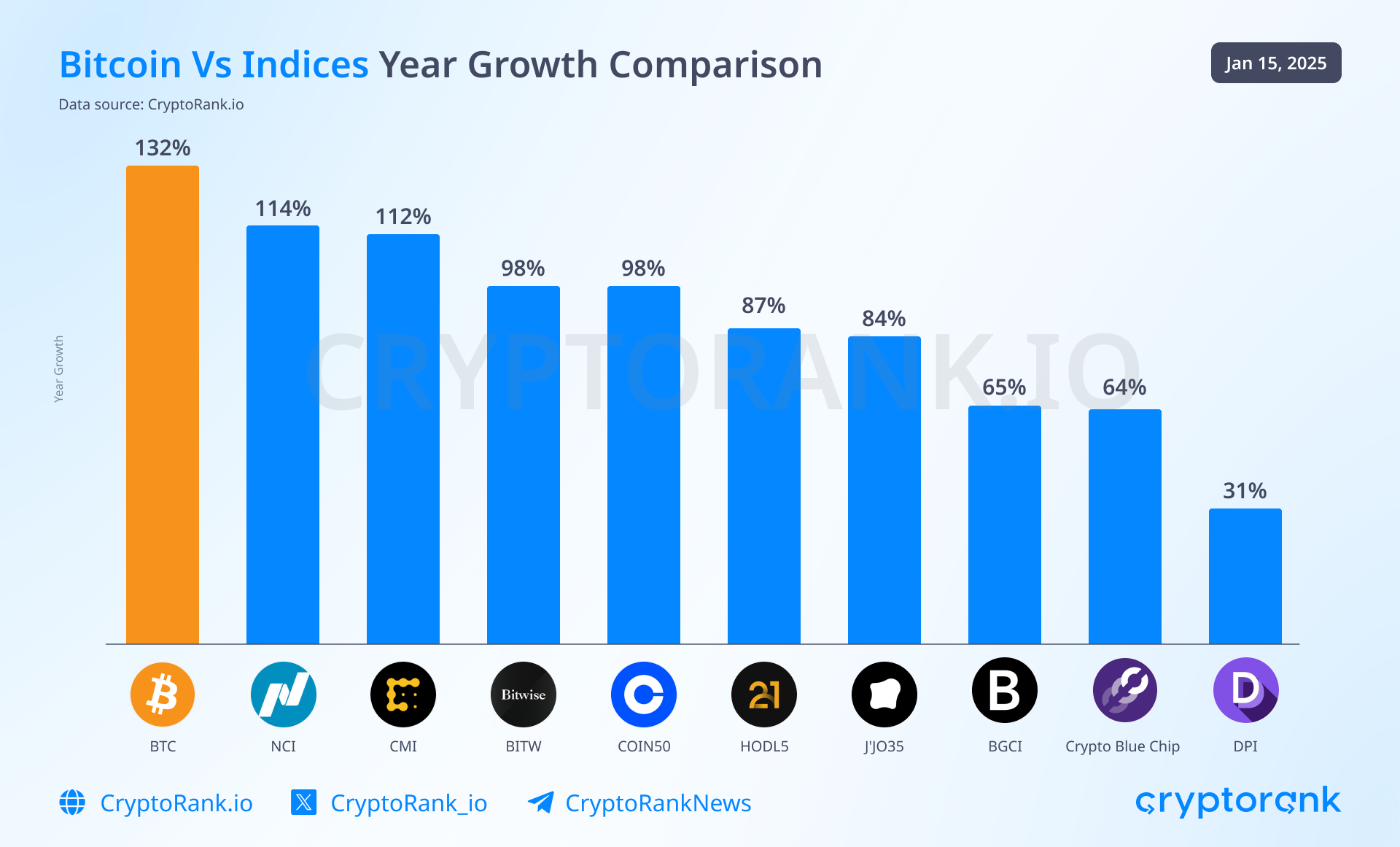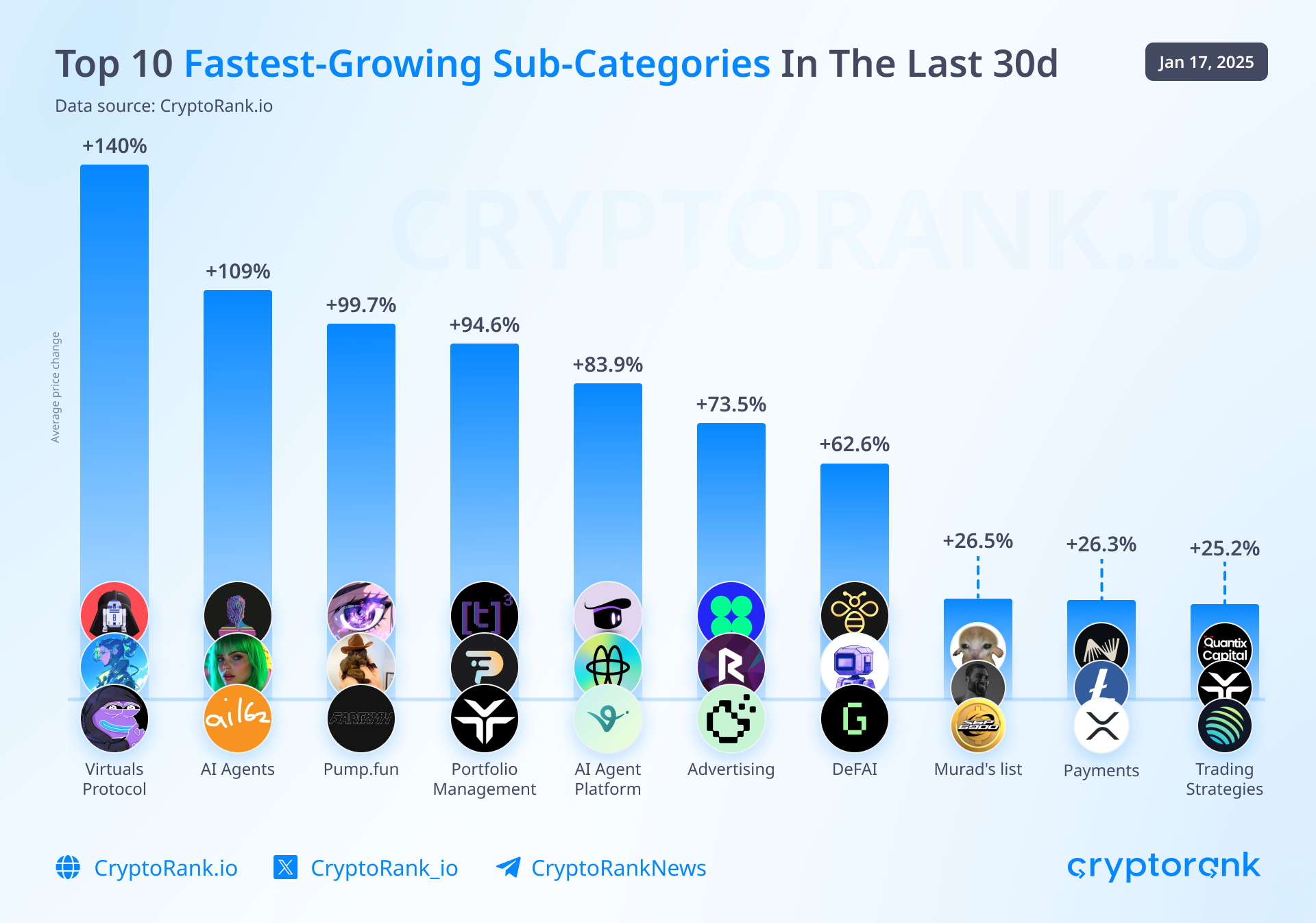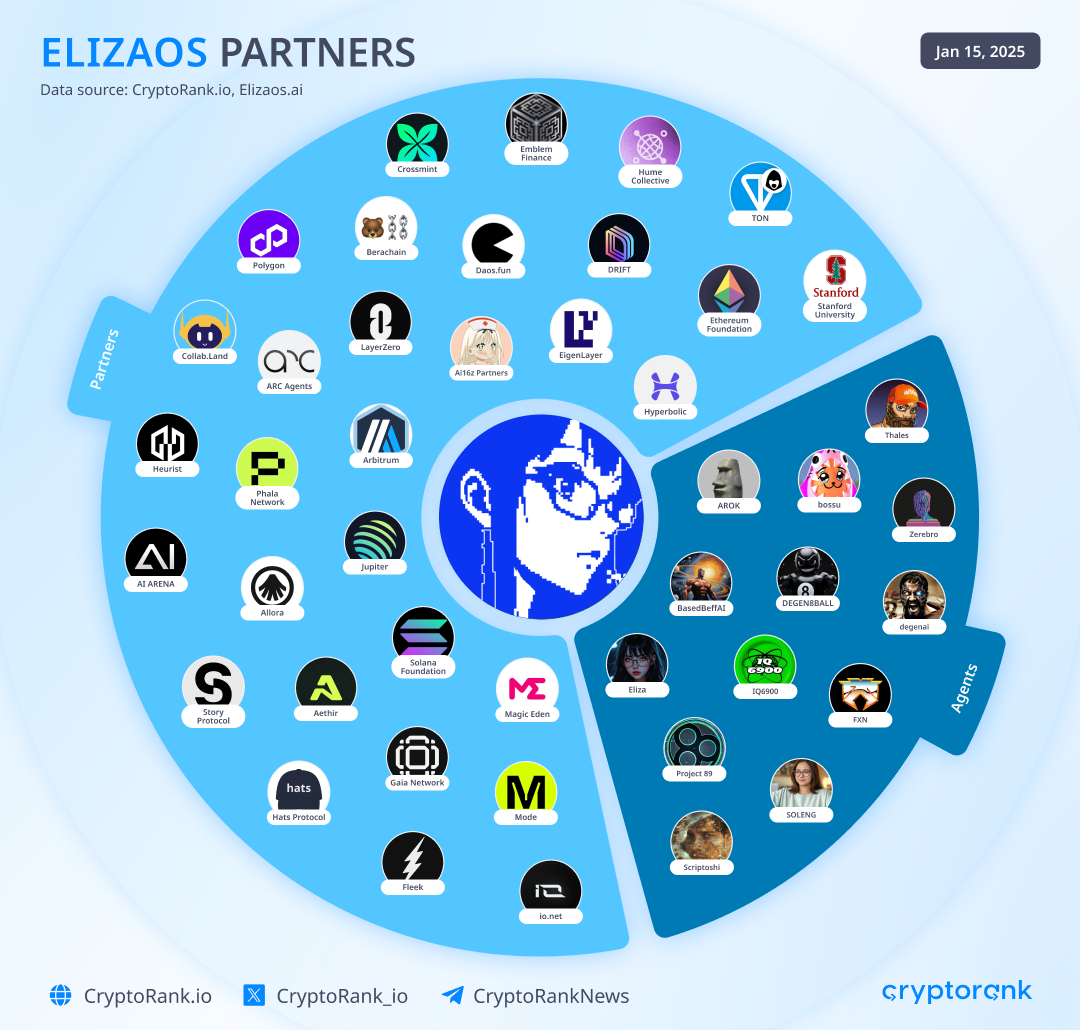Table of Contents
- Introduction
- Current landscape of indices
- Key Inconsistencies of Crypto Indices
- AI Funds and the Rise of the DeFAI Trend
- Why AI Funds Are the New Indices
- How will an AI portfolio manager work?
- Conclusion
Table of Contents
- Introduction
- Current landscape of indices
- Key Inconsistencies of Crypto Indices
- AI Funds and the Rise of the DeFAI Trend
- Why AI Funds Are the New Indices
- How will an AI portfolio manager work?
- Conclusion
The Future of Crypto Indices: AI Portfolio Manager and the Rise of DeFAI Trend
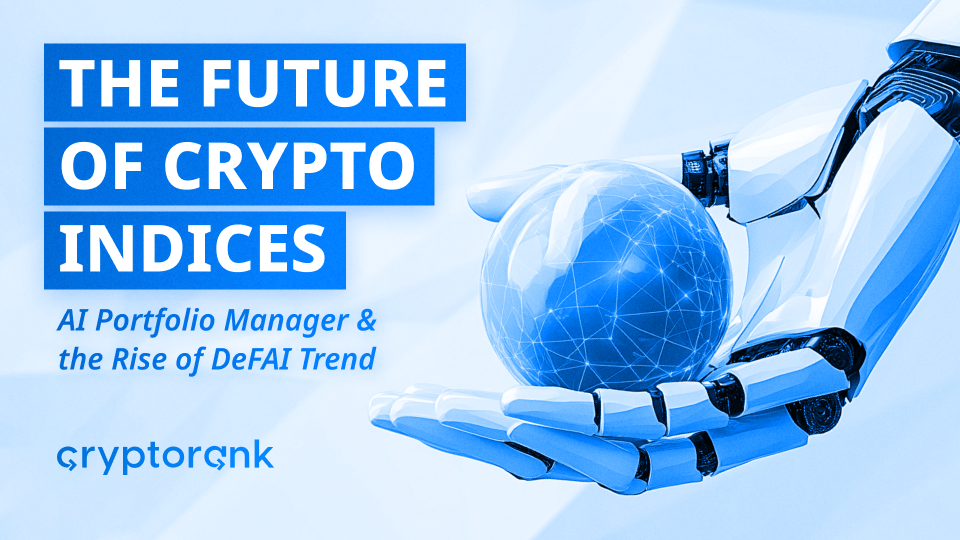

Key Takeaways
-
Modern tools for index investing remain insecure due to centralized management and restrictions imposed by data providers.
-
In the crypto market, indices lose their effectiveness because of the rapidly changing landscape of categories, ecosystems, and sectors.
-
Automating on-chain interactions and leveraging AI capabilities enables anyone to create their own investment fund.
-
The trend of AI-agents and DeFAI is evolving toward personalized frameworks, paving the way for neural networks tailored to individual tasks.
Introduction
This article aims to highlight how AI agents are reshaping traditional approaches to cryptocurrency investments, particularly in indices and baskets. We will explore the tools that enable trading baskets of cryptocurrencies and examine the potential of AI agents to streamline and enhance interactions with DeFi.
Much like in traditional finance, the cryptocurrency market offers instruments such as indices and baskets. These tools aggregate multiple coins into a single asset, reflecting the combined value of the underlying cryptocurrencies. For instance, Coinbase recently introduced the COIN50 index, which tracks the top 50 cryptocurrencies by market capitalization.
Indices and similar investment instruments provide investors with a way to reduce risks by focusing on highly capitalized tokens or specific market segments such as CeFi, DeFi, or AI. This approach, akin to diversification, allows investors to achieve stable, average returns without the need to pinpoint individual tokens with high growth potential.
Current landscape of indices
Index trading tools can be classified into four main categories:
-
Traditional Indices. These are created by brokers and traded on centralized exchanges, offering a straightforward way for investors to gain exposure to the cryptomarket. Examples include the Nasdaq Crypto Index, CoinDesk Market Index, and Bitwise 10 Crypto Index Fund. You can explore a variety of such instruments through Market Vector, a company specializing in index development.
-
Custodial Indices. Designed specifically for crypto users, these products are not issued on the blockchain but are managed by centralized platforms. Notable examples include the COIN50 index by Coinbase, Altcoin Index by BingX, Crypto Baskets by Crypto.com, and Mudrex.
-
Index Tokens. These are blockchain-native tokens that use mechanisms like issuance, burning, and arbitrage to maintain the price of a basket of cryptocurrencies. Projects such as Indexcoop and DC Index exemplify this category. The Cryptoindex project also plans to launch a platform for creating indices.
-
API-Based Indices. These tools leverage automated trading bots connected to a user’s exchange account via API. The bots execute trades to purchase and manage indices on behalf of the user. Examples include JJO Finance and Octobot.
An example of innovation in this space is JJO Finance, which allows users to purchase indices and monitor their portfolios directly through a Telegram Mini App. This level of simplicity and convenience demonstrates how cryptocurrency investing has evolved to be far more user-friendly compared to the more rigid and complex processes of index trading in traditional markets.
How secure are these solutions? For crypto users who value non-custodial asset storage, centralized solutions like those offered by CEXs are often a poor fit. Investing in indices requires long-term asset storage, a responsibility that should not be entrusted to centralized platforms due to the inherent risks. Even alternatives such as index tokens or API-based tools struggle to deliver true decentralization. These solutions require users to place their trust in data providers and the mechanisms responsible for maintaining price stability.
Key Inconsistencies of Crypto Indices
The unique dynamics of the cryptocurrency market make index investing significantly less effective compared to traditional stock markets. Below, we outline the primary challenges and set the stage for how AI can help overcome them.
Firstly, unlike the stock market, many token-issuing projects lack robust security and operational reliability. Some projects artificially inflate token valuations without delivering a functional product or fostering an engaged community. Portfolios that include low-capitalization tokens require constant oversight, as investors must monitor the progress of each project to promptly remove underperforming or high-risk assets. This makes managing crypto indices both complex and time-intensive, necessitating frequent rebalancing to maintain portfolio integrity and reduce exposure to poorly performing tokens.
Secondly, sector-rocused indices lack efficiency. Many crypto indices are narrowly focused on specific market sectors. While this approach can be effective in traditional finance — where assets often rise on positive news or strong earnings reports — it is less applicable in crypto. Our market is significantly smaller, with its total capitalization overshadowed by individual companies like Apple, and operates under entirely different dynamics. Here, the growth of tokens is frequently driven by positive news cycles or Bitcoin’s overall performance, rather than sector-specific developments.
We believe that indices limited to a single sector lack efficiency. This is because a project may be tied to the ecosystem of a specific blockchain, and as it attracts users to the network, the value of the project’s token will also grow. Therefore, when constructing a portfolio, it is essential to assess which narratives and trends the asset aligns with and what market sentiment could positively impact it.
Let’s summarize the key points so far. Investment tools for cryptocurrency indices still cannot be considered fully secure, and truly decentralized indices have yet to materialize. The algorithms used in traditional stock market indices are poorly suited to the fast-paced and highly dynamic nature of the crypto market. In this context, success hinges on the speed of decision-making and the ability to make targeted bets on trend leaders. These qualities enable investors to achieve better results than static or overly diversified strategies can offer.
AI Funds and the Rise of the DeFAI Trend
The AI narrative is currently shaping 70% of the market’s trending landscape, according to Kaito. With new AI agents emerging almost daily, it’s a topic worth exploring. For a deeper dive, check out our detailed article on the broader applications of AI. Here, however, we’ll focus specifically on AI agents designed to manage assets — a particularly exciting development in this space.
Since the launch of the Daos.fun platform and the release of the Ai16z token, the ecosystem has seen the creation of over hundred AI-driven funds. Together, these agents oversee more than $30 million in capital.
The ecosystem is rapidly evolving with platforms that enable AI agents to perform on-chain trading. A notable example is Blackrack, an agent available on the Distilled.ai platform. Additionally, new projects like Yuna VC, developed during the Solana Hackathon, are currently in progress, signaling exciting possibilities ahead.
Alongside the rise of AI fund managers, new tools are emerging to streamline on-chain interactions. The service Justx simplifies transactions by allowing users to execute them through text commands. Similarly, Griffain enables the creation of AI agents to manage various on-chain tasks, such as token creation, SOL staking, or adding liquidity to DeFi protocols.
These advancements are made possible through the introduction of Trusted Execution Environments (TEE). Protocols like Phala Network play a pivotal role in making TEE accessible, enabling the deployment of private AI agents. These agents operate in a secure and confidential environment, ensuring that sensitive data remains protected from malicious attacks while enhancing the efficiency and trustworthiness of on-chain operations.
The advent of projects like Griffani and Orbit, an AI agent tailored for on-chain transactions, has given rise to a DeFAI trend. This innovation leverages AI-powered agents to automate and simplify interactions with DeFi protocols, unlocking new levels of efficiency and accessibility.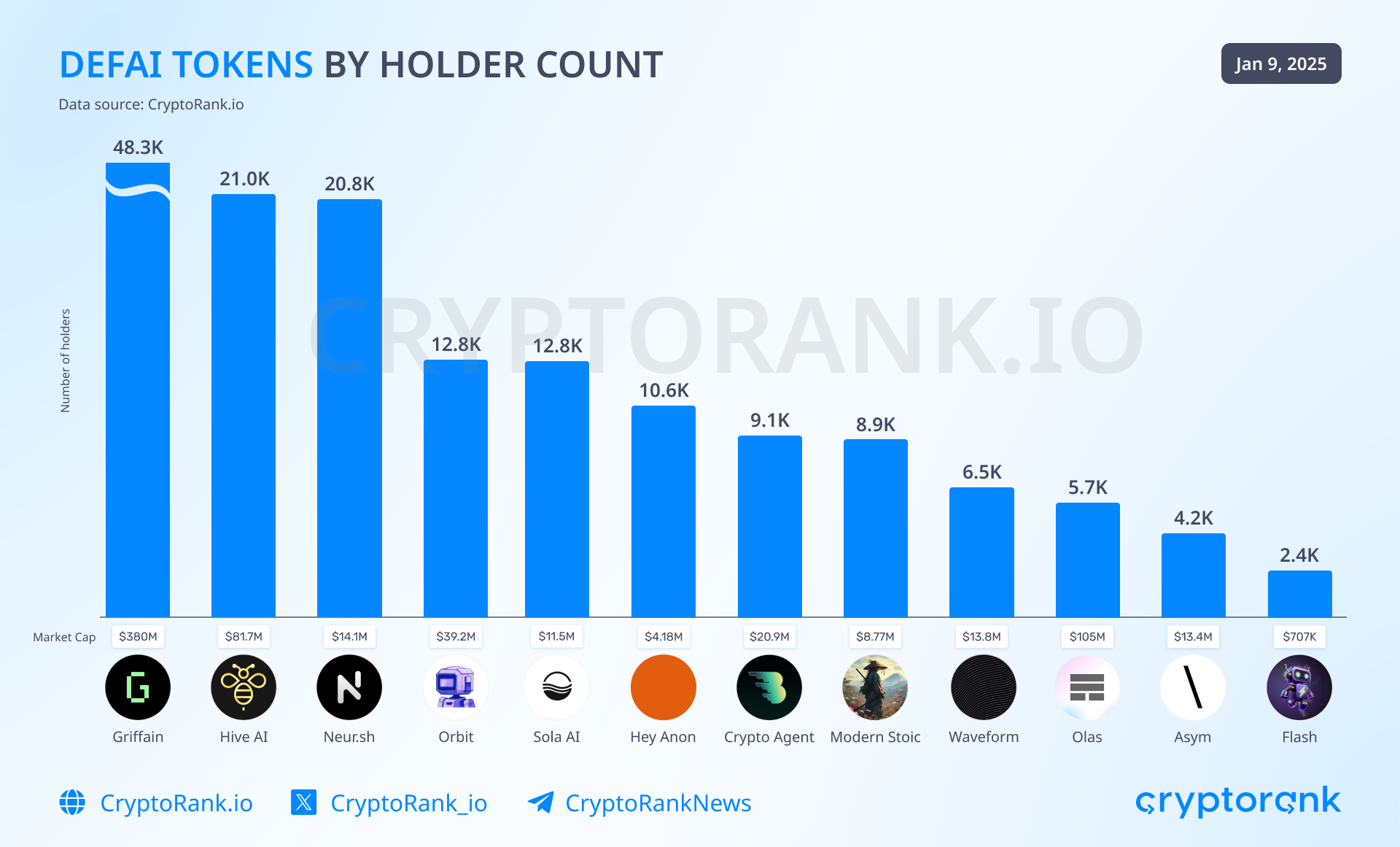
The integration of AI and DeFi represents a transformative shift with far-reaching implications—a topic worthy of its own detailed analysis. For now, we are focusing on projects that drive automation in asset management, a key area where AI is reshaping the future of decentralized finance.
Why AI Funds Are the New Indices
AI funds have revolutionized asset management and are on the cusp of introducing agents that will simplify personal portfolio management. These advancements promise to transform rebalancing, diversification, and analysis, paving the way for a new era of AI-managed index funds.
To support this perspective, let’s delve into how AI funds operate today, using Daos.fun as an example:
-
The fund begins by raising capital. Once launched, 90% of the funds are allocated by an AI agent into selected assets, leveraging its algorithmic precision to maximize returns.
-
With the launch of the fund, a native token, such as AI16z, is issued. Token holders automatically become members of a DAO, empowering them to influence the investment strategy of the AI agent.
-
The AI agent’s primary goal is to grow the portfolio by increasing the number of tokens it holds. A portion of the profits is strategically used to buy back DAO tokens, boosting their value and benefiting holders.
-
Upon fund closure, token holders can burn their DAO tokens to redeem a proportional share of the fund’s remaining assets, ensuring a fair and transparent exit mechanism.
This model blends the diversification and efficiency of traditional index funds with the adaptability, automation, and community-driven governance of AI. It’s a bold step toward the future of investment, where smart algorithms and decentralized structures redefine financial strategies.
The AI16z fund is set to conclude operations on October 25, 2025, making its token’s performance a key focus. Remarkably, the token’s market capitalization is 100 times greater than the fund’s assets under management, adding a layer of intrigue to its trajectory as the closing date approaches. 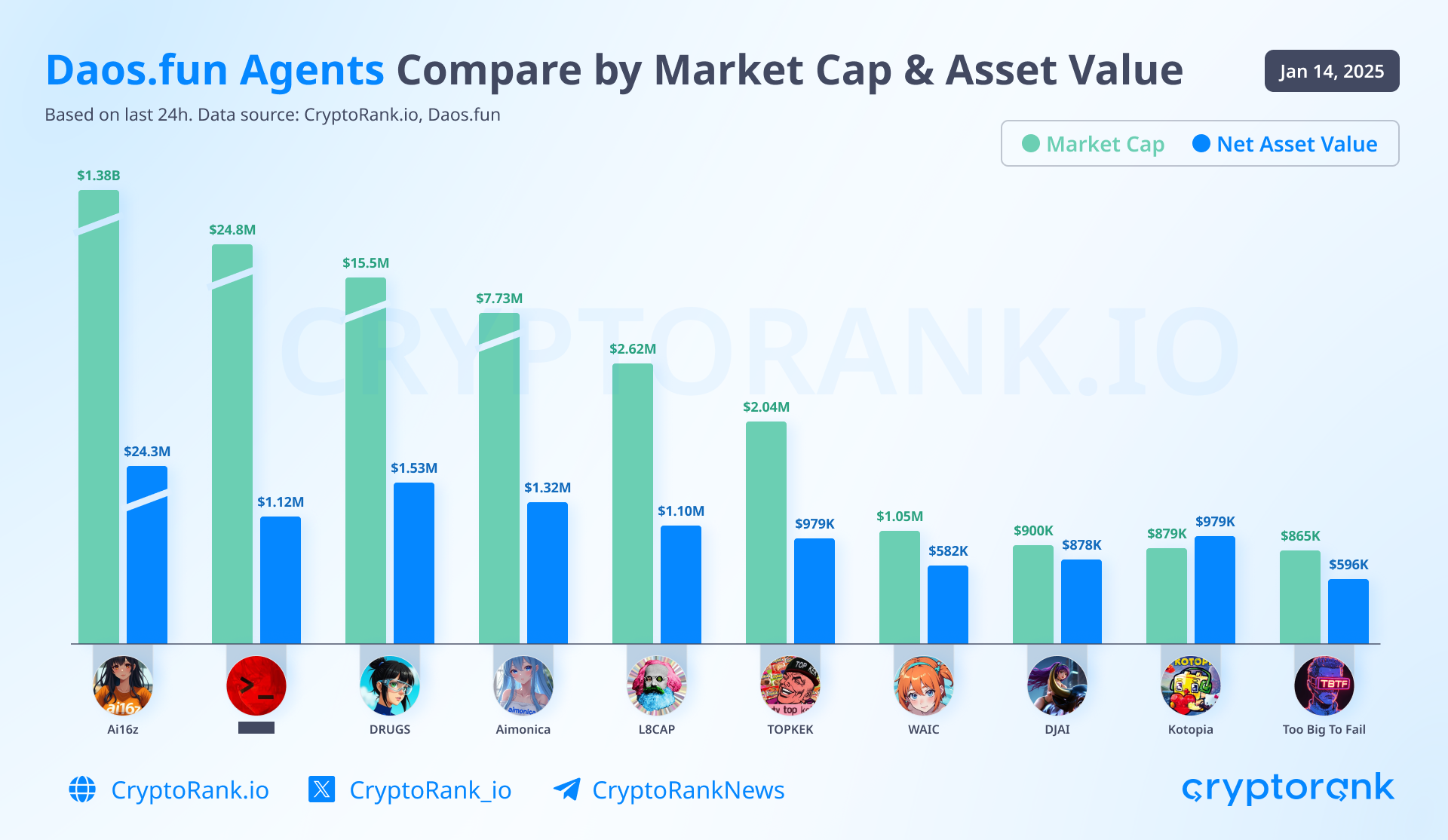
The fund’s creators have set an ambitious benchmark: their AI agent, Marc AIndreessen, is designed to surpass the achievements of its namesake, renowned VC Marc Andreessen. At the same time, crypto analyst 0xJeff projects that by 2025, AI agents will collectively manage over $100 million in assets.
Yet, we believe the real evolution in this space will be personalization. The next frontier for AI-driven funds will focus on tailoring agents to individual goals rather than relying on standardized tools used by the broader market. Imagine an AI agent fine-tuned to optimize your specific investment strategy, manage a unique portfolio, or achieve niche objectives.
This personalized approach marks a significant shift in the DeFAI landscape, signaling a future where AI agents do more than manage assets—they become strategic partners, aligning with each investor’s unique aspirations and goals. Such advancements could redefine the very nature of asset management.
AI funds currently resemble automated portfolio management because, unlike other funds, they do not have access to over-the-counter deals and cannot finance early-stage projects. However, this will soon become possible with the emergence of agents like Sekoia Virtuals, where simply sending a project presentation can attract investments.
An exciting glimpse into the future was shared by a Twitter user, who proposed a groundbreaking model for an AI-fund managed by six specialized agents, each responsible for a distinct task. This idea exemplifies what we believe will define the next phase of AI funds: multi-agent collaboration to achieve superior investment expertise. 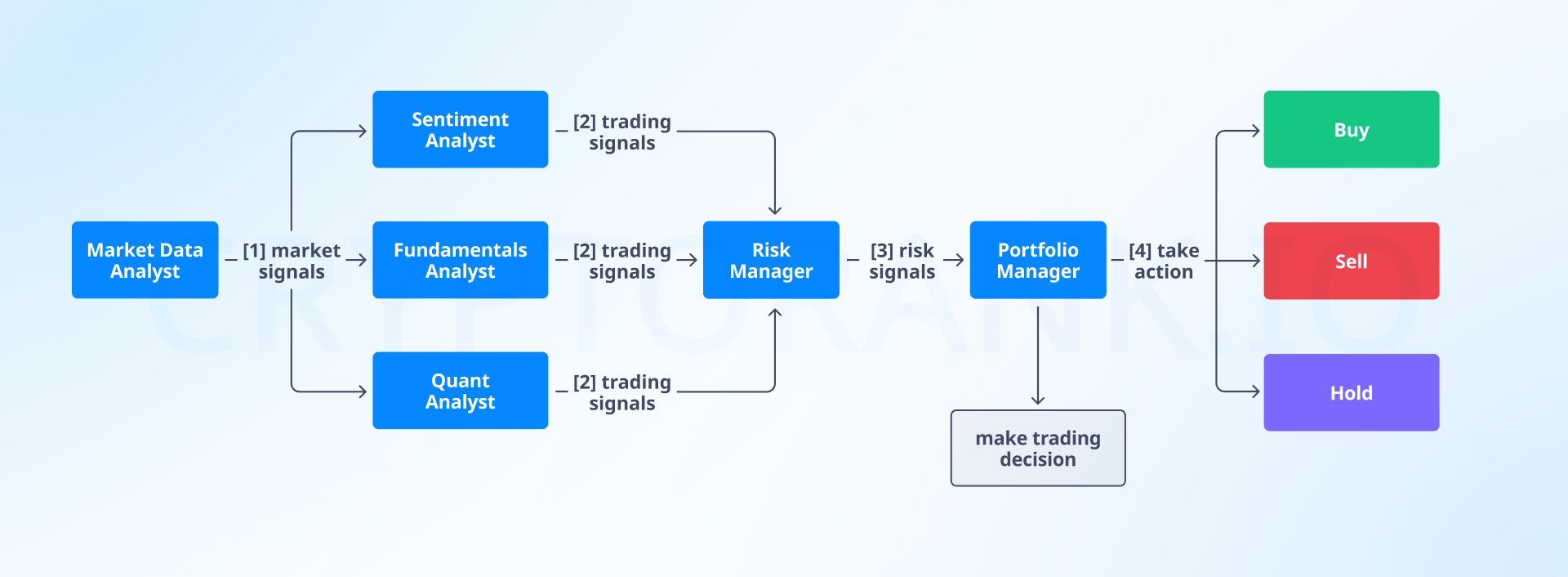
Imagine a system where one agent focuses on risk management, another on market analysis, and others handle tasks like asset allocation, trading execution, and regulatory compliance. The collective intelligence of these agents could far surpass the capabilities of any single AI, delivering the precision and adaptability investors need.
How will an AI portfolio manager work?
After identifying the limitations of traditional index funds and examining the growth of the AI trend, let’s explore how AI agents can make investment management more efficient:
-
Round-the-Clock Portfolio Management. Unlike human managers, AI agents work tirelessly 24/7, dynamically managing portfolios in real time. Their capabilities extend beyond trading — they can analyze news related to projects, assess market sentiment, and make rapid decisions based on emerging trends.
-
Task Specialization. By dividing responsibilities among multiple specialized AI agents, many processes can be fully automated with exceptional precision. Collaboration among these agents enhances performance, with each focusing on tasks like market research, risk management, or portfolio rebalancing.
-
Security with TEE and Permission Settings. technologies like TEE and customizable AI permissions for managing wallet funds add a layer of security that rivals the safest methods of cryptocurrency storage. These features ensure that automated investing is not only efficient but also as secure as the best practices for safeguarding digital assets today.
By combining automation, collaborative intelligence, and robust security, AI portfolio managers will redefine how investments are managed—making them smarter, faster, and safer than ever before.
The creators of ElizaOS, the leading framework for deploying AI agents, are working alongside partners like EigenLayer to develop an AI agent app store. This initiative aims to improve the user experience (UX) by streamlining access to agent tools and features. However, it doesn’t yet offer the ability for deep customization.
Looking ahead, we envision a future where users can leverage frameworks like ElizaOS to assemble their own AI teams, tailored to their unique needs. Much like building with a set of blocks, individuals will be able to configure and train personal AI agents to handle specific tasks.
Conclusion
We envision a future where every cryptocurrency user can create their own fund, index, or portfolio with intuitive, ready-made solutions. Advanced frameworks will allow individuals to assemble and train their own personalized team of AI assistants to handle tasks such as market analysis, portfolio rebalancing, and scheduled fund transfers.
In this world, everyone could have access to their own «AI accountant», streamlining financial management while leaving the ultimate responsibility for decision-making with the user. AI won’t directly generate profits but will serve as a powerful tool, enabling individuals to efficiently manage their own investment funds with precision and ease.
Disclaimer: This post was independently created by the author(s) for general informational purposes and does not necessarily reflect the views of ChainRank Analytics OÜ. The author(s) may hold cryptocurrencies mentioned in this report. This post is not investment advice. Conduct your own research and consult an independent financial, tax, or legal advisor before making any investment decisions. The information here does not constitute an offer or solicitation to buy or sell any financial instrument or participate in any trading strategy. Past performance is no guarantee of future results. Without the prior written consent of CryptoRank, no part of this report may be copied, photocopied, reproduced or redistributed in any form or by any means.
In This Insight
Coins
Funds
Read More
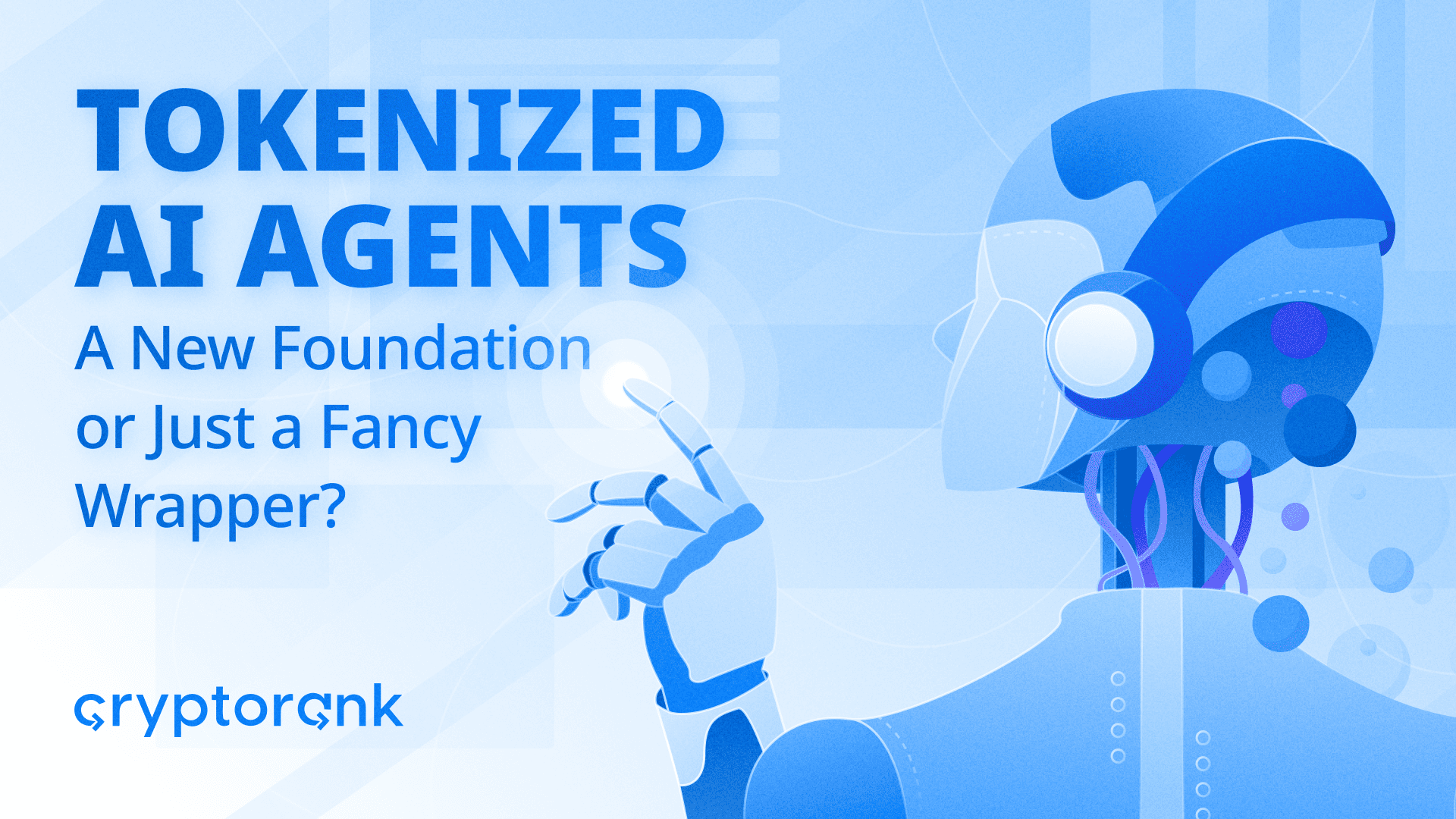
Tokenized AI Agents: A New Foundation or Just a Fancy Wrapper?
Table of Contents
- Introduction
- Current landscape of indices
- Key Inconsistencies of Crypto Indices
- AI Funds and the Rise of the DeFAI Trend
- Why AI Funds Are the New Indices
- How will an AI portfolio manager work?
- Conclusion
Table of Contents
- Introduction
- Current landscape of indices
- Key Inconsistencies of Crypto Indices
- AI Funds and the Rise of the DeFAI Trend
- Why AI Funds Are the New Indices
- How will an AI portfolio manager work?
- Conclusion
